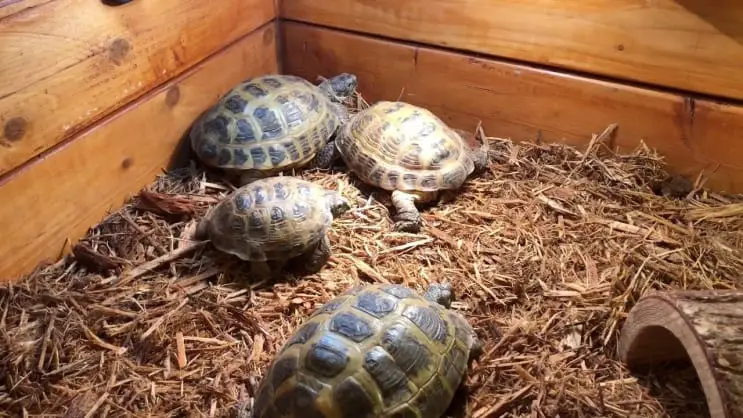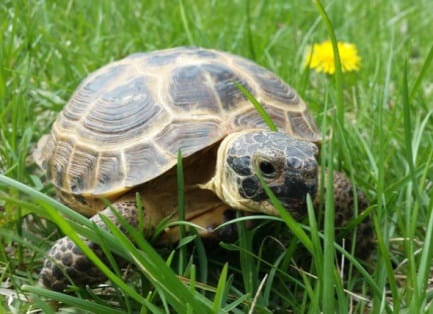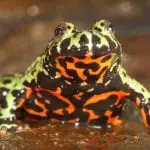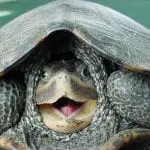The Russian tortoise (Agrionemys horsfieldii) is also called the Central Asian tortoise, Afghan tortoise, steppe tortoise, and Horsefield’s tortoise. It is a part of IUCN’s list of vulnerable species due to human activities, the illegal pet trade, and environmental destruction. This small tortoise species grow 13 to 25 cm, with females slightly larger than males to accommodate their eggs.
If you have a pet Russian tortoise, consider yourself the caretaker of a very special species. You need to provide a special enclosure to help it live and thrive peacefully and in good health. So what makes a good enclosure for a tortoise as precious as a Russian tortoise?
What makes a good breeding enclosure?
Russian tortoises are very hardy animals. They are less likely to get sick, harbor parasites, and other dangerous turtles/tortoise diseases. These tortoises are known to be one of the first animals to go to the moon and back; therefore, you can expect these as easy to adapt and are less vulnerable to stress.
When you have young turtles, these can adapt to captivity, considering that they have not known any kind of environment. Therefore, a good breeding enclosure for a Russian tortoise is something simple, easy to clean, and can be improved or upgraded if you are considering breeding your pets.
You can choose from an indoor or outdoor enclosure for your pet Russian tortoise. If you prefer an outdoor enclosure remember to
- Find a safe place where your enclosure should be. It must be a place away from direct sunlight, should be on solid ground and not from runny soil, and a place where the tortoises are safe from natural predators.
- Use good and durable materials that can sustain outdoor use.
- Construct an area where your pet can take cover from the sun or rain.
- Construct an enclosure that will protect your pet from its natural predators.
- Construct an enclosure enough for the number of pets you want to keep.
- If you’re considering a breeding cage, create a safe, comfortable enclosure in a protected area.
If you’re thinking of housing Russian tortoises indoors, you must remember the following
- Construct a cage or enclosure with enough space for your pets to move about safely.
- Use the best UV lighting system. Russian tortoises need the sun to bask and to sustain many of its vital functions.
- Use the best bedding for your pets.
- Observe safety against your other household pets.
Planning for your tortoise enclosure

Now that you have a clear idea of what makes a great breeding enclosure for your pet Russian tortoises, you must now plan for your project. It does not take a lot of time to plan, but planning assures that you can finish on time and that your pets get the best enclosure, especially for breeding.
Consider the following when planning for your Russian tortoise breeding enclosure
- Space where you will place the enclosure
- The number of tortoises you intend to keep
- The number of enclosures/cages you want to build
- The type of material you want to use
- Is there a time frame you want to follow (like building the breeding enclosure before the breeding season)
- Do you intend to work alone or with an assistant?
Designing the enclosure
When designing the enclosure, follow a simple concept: create a surface that has holes to accommodate nesting vats or bins and tall sides to keep your pet safe and to prevent escape. Most ingenious pet owners construct a top part of the breeding enclosure to preserve environmental conditions such as temperature and humidity.
A design that’s simple and easy to make is the best beginner enclosure for a novice. We are going to show you how to make a simple but sizeable breeding bin for your precious Russian tortoises. This design can accommodate three to four tortoises.
Think of a custom made dining table with holes to fit nesting bins. To further support the bins, a second “table” supports the top surface and the bins. This enclosure will have posts or legs like a table, but with stable coasters so you can move the enclosure anywhere you want.
The materials you will need
- A nesting bin (at least 7 – 9 inches deep)
- Several 2 x 8 inches lumber and plywood
- Some 2 x 4 inches and 1 x 2 inches lumber
- Wheel coasters
- Carriage bolts and driving screws
- Optional melamine sheet 4 x 8 inches
- Optional chicken wire or screen
Building the frame/main structure
The rest of the enclosure design will depend on the shape and the size of the nesting bins you will use. To make a breeding enclosure for a small group of tortoises, a large nesting bin should be considered. We used a bin that is 7 to 9 inches deep so you can place more soil so the tortoises can dig their nests.
You can find large heavy-duty concrete mixing bins in hardware stores and home improvement outlets. These large bins measure 2 ft. long x 3 ft. wide x 8 inches in height. These bins should be supported by the edge and the floor of the container.
With a jigsaw, cut the flat wooden top of the table according to the shape and size of the bin. For a top that’s the size of a regular rectangular dining table, we used two bins and cut two shapes to accommodate each bin. Sand the edges of the wooden top so that the bins will easily slide over it. The fit must be snug, and the turtles must be able to easily walk through bins without falling or hurting themselves.
The tabletop has a wooden surface at the bottom to catch the bins. When the two flat surfaces are ready, construct the table legs and frames. Use the lumber to make stable legs and reinforced frames. Use carriage bolts and driving screws to hold everything together.
The finished structure looks like a table but with two table tops on top of each other. The top with the cut bin shapes is at the top while the plain top is at the bottom. When the structure is ready, install the coaster feet.
Building the walls
The enclosure walls for pet Russian tortoises should be high enough to prevent escape and for your pets to keep safe. The walls are constructed from pieces of lumber to create around a foot and a half high walls along the table edges. Russian tortoises are active animals but are not into escaping their enclosure, so you don’t need a higher wall.
Cut the lumber into different pieces that will fit the edges of the table. Hold theses with strong hardware like driving screws. This enclosure has an open design on top where you will load your pets. Reinforce the walls with more screws and bolts.
Building the top
Once the walls are ready and attached to the tabletop, you may now make the top of the enclosure. Most pet owners prefer to cover their enclosure to preserve temperature and humidity. This is very important since you are creating a breeding enclosure. The enclosure should be able to preserve heat to keep the eggs warm.
The top of this project is made of melamine. Melamine is not so easy to cut, so be ready to use clamps to cut it according to the size of the top of your enclosure. You can simply place the large piece of melamine on top of the enclosure or use hinges to create a door. To support the lid or top, add lumber strips across the enclosure. You can also use these strips to install enclosure lighting, so make sure to install at least four strips across.
Take note that turtles are more active than you may think. Adding hinges and locks can significantly improve the safety and the security of your pet.
Installing lighting

UV lighting is essential, especially when you want to breed Russian tortoises. Lighting can provide enough heat to incubate eggs and can keep your tortoises healthy and happy with minimal shell problems.
Choose convenient UV lighting and use the strips on top of the cage to position the lights. Use electrical strips to connect the lights to your socket. Use a timer to automatically power off the lights in the morning and to power these on when nighttime comes. Avoid using extension cords and have a dedicated wall socket/outlet as much as possible
A humidifier may be installed inside the room where your enclosure will be. Set the enclosure to the best setting that will help newborn tortoises and to keep the turtle shells healthy.
About bedding
There are different kinds of bedding available, but for tortoises, a humid substrate material like orchid bark with peat moss is a good idea. If this is not available, use sand and soil, especially when you are breeding tortoises. The bedding should not be completely dry so that the tortoise can easily dig through. You can check for good bedding from local pet stores and pet shops online. Install one lamp on top of the breeding area.
About enclosure accessories
A tortoise’s enclosure should have a large enclosure with many basking areas. Turtles need the sun to regulate their body temperature, and a good basking rock would suffice. Look for a good, wide, and smooth rock in your garden or go hiking to find a sufficient rock to use. Another important accessory is the turtle’s feeding and water dishes. Use low and wide dishes so your pet can easily drink and eat from. The dishes should be made of ceramic so that your pet won’t knock these over as they move about.



